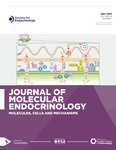An acetylation rheostat for the control of muscle energy homeostasis
-
Figure 1
The temporally regulated mitochondrial and angiogenic adaptations following exercise: during exercise, the skeletal muscle experiences an increase in oxidative phosphorylation and an elevation in both the NAD+:NADH and AMP:ATP ratio. Consequently, SIRT1 and AMPK are activated and initiate a metabolic adaptation by increasing the activity of PGC-1α, resulting in the induction of mitochondrial biogenesis. However, these increases in mitochondria content and function have been shown to increase oxygen consumption leading to a temporary state of intracellular hypoxia and HIF-1α activation. With hypoxia comes a reduction in OXPHOS activity and NAD+ availability, which has been shown to inactivate SIRT1 and SIRT6, negative regulators of HIF-1α. Therefore, this temporal inhibition of SIRT1 and SIRT6, along with elevated HIF-1α activity, activates angiogenesis as an adaptation for the increased demand for oxygen following mitochondrial biogenesis.
- © 2013 Society for Endocrinology











